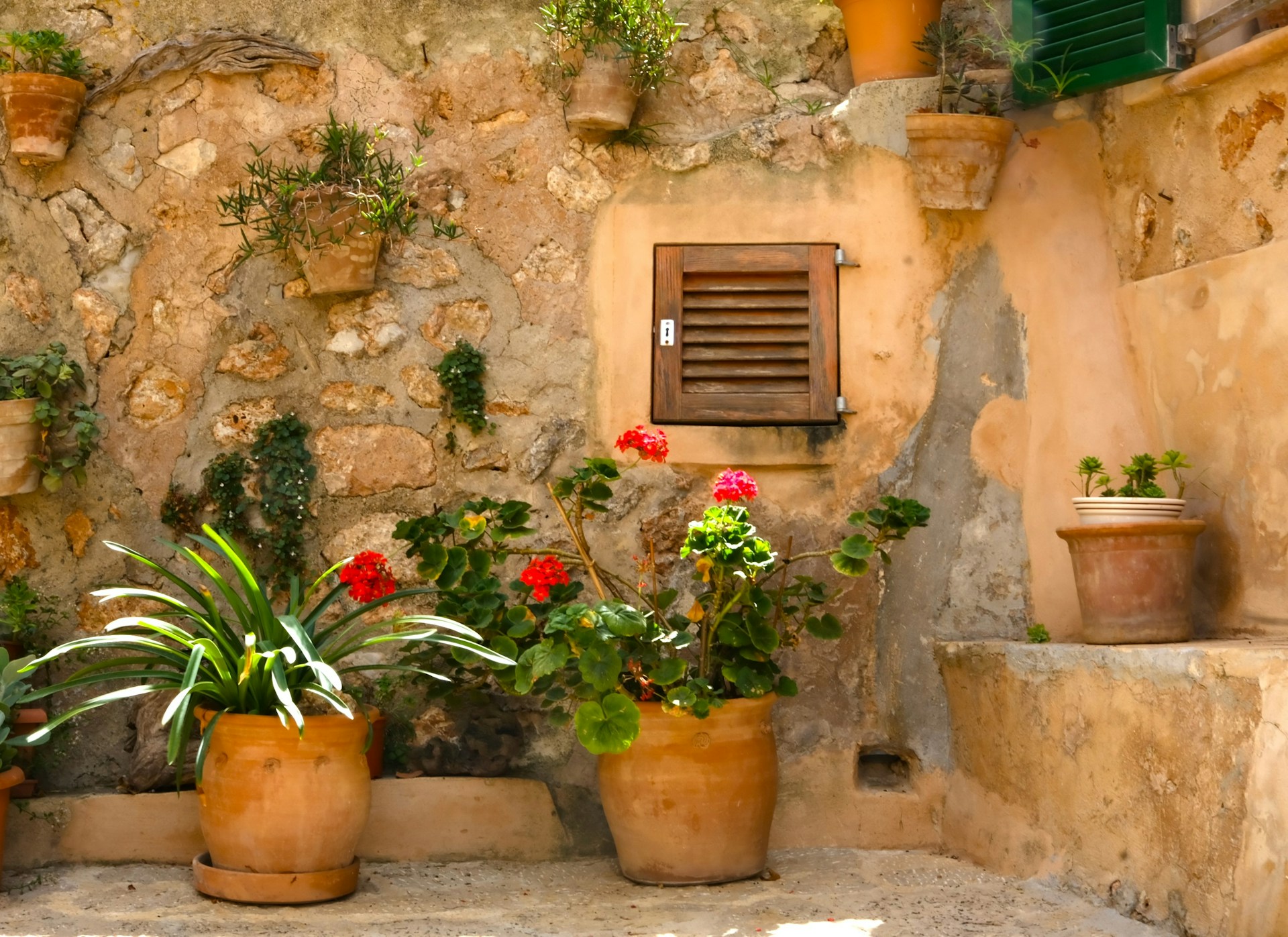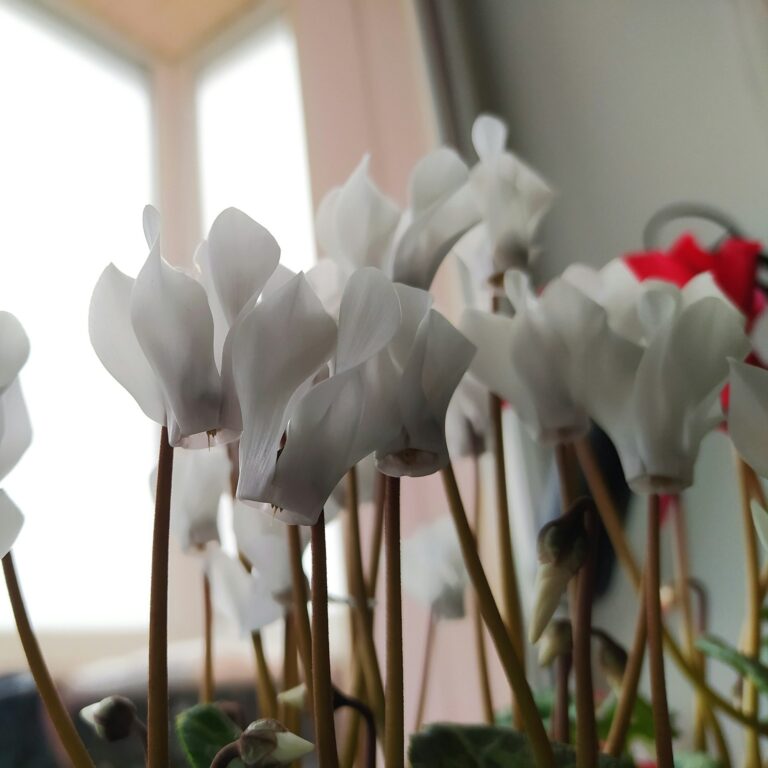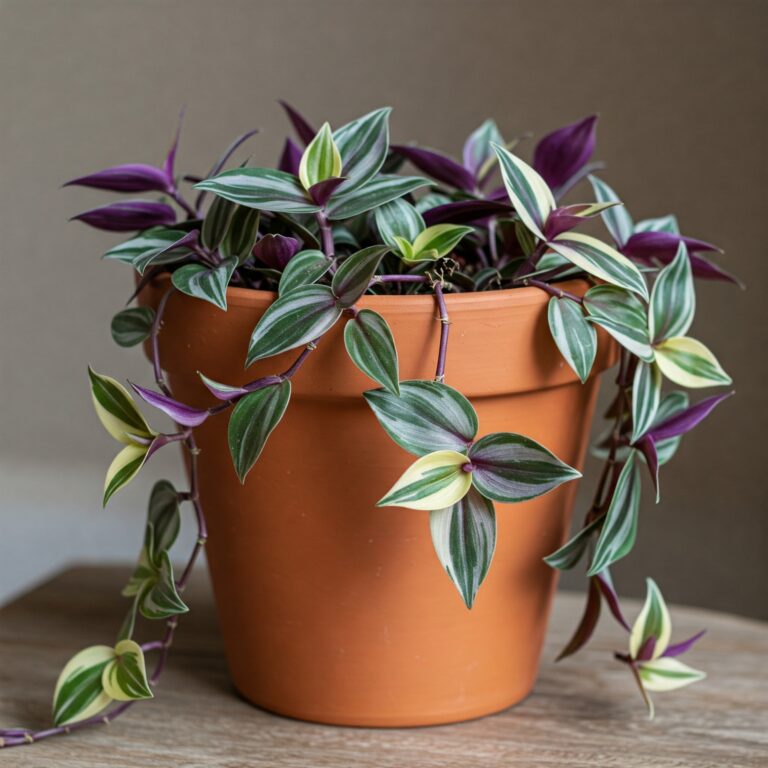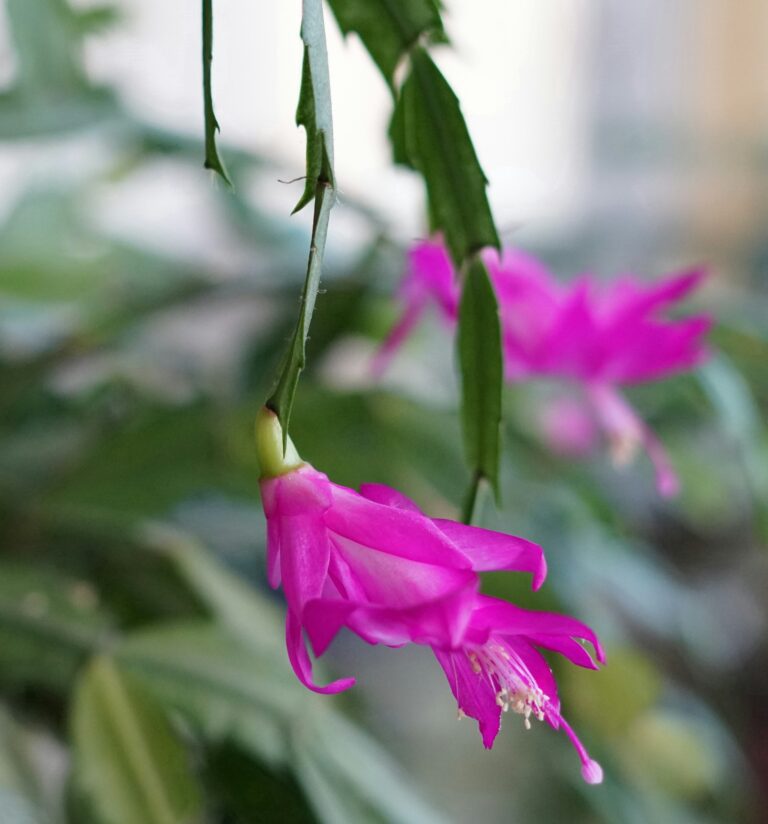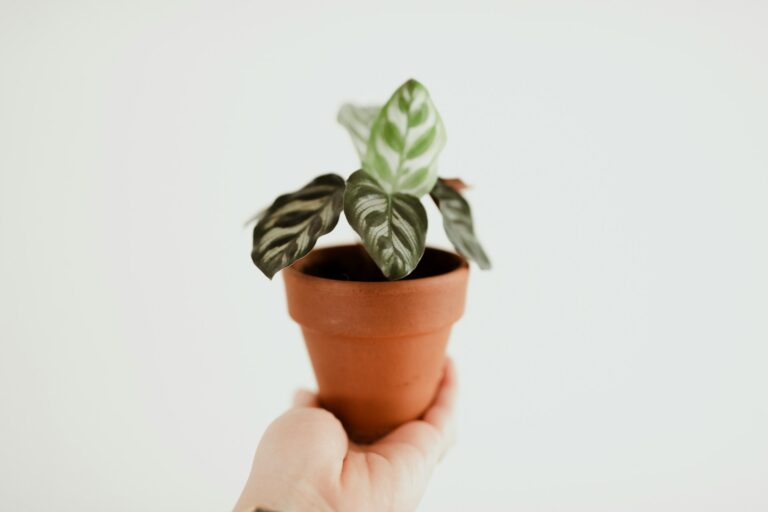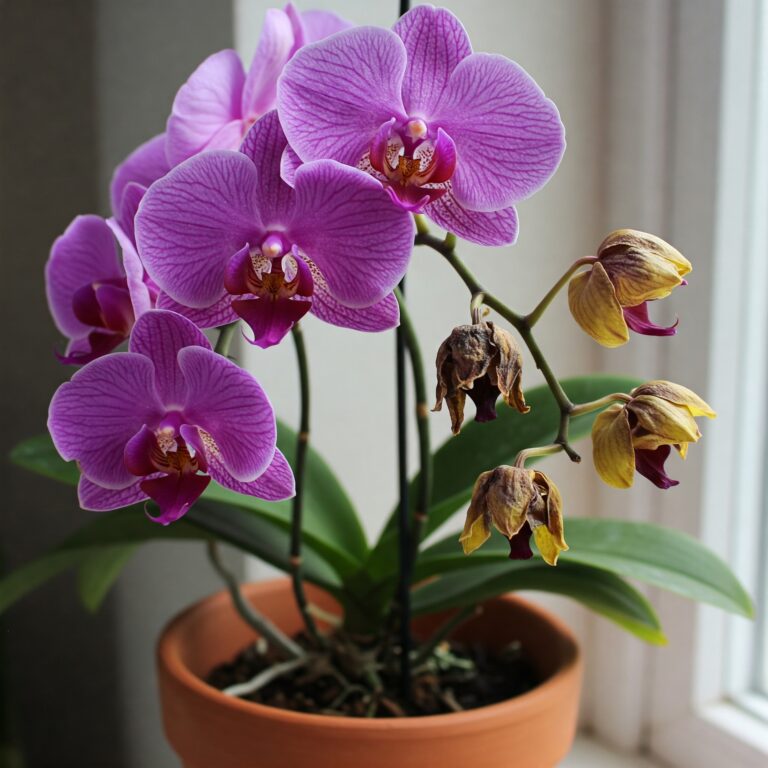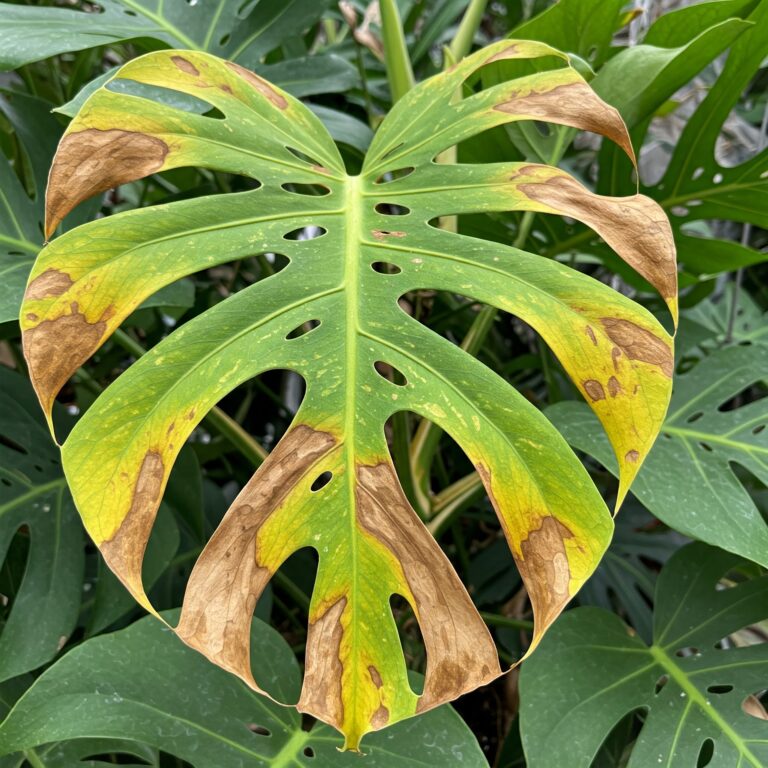Potted plants bring life and beauty to indoor spaces, but caring for them can sometimes present unique challenges. One such challenge is maintaining plants in containers without drainage holes.
While pots with drainage holes are generally recommended for optimal plant health, there are various reasons why you might use containers without them. Perhaps you’ve fallen in love with a decorative pot that doesn’t have holes, or you’re trying to protect delicate surfaces from water damage.
Whatever the reason, growing plants in pots without drainage holes requires a careful approach to watering and soil management.
Choosing the Right Plants for Pots Without Drainage
Best Plant Types for Containers Without Holes
When it comes to selecting plants for pots without holes, choosing varieties that are more tolerant of less-than-ideal drainage is crucial.
Succulents are a popular choice because they naturally store water in their leaves and can survive periods of drought.
Snake plants and ZZ plants are also excellent options. These plants are resilient, low-maintenance, and can handle a bit of neglect—making them ideal for pots without drainage.
For those who prefer leafy green plants, ferns and peace lilies can work as well, provided you carefully manage their water intake.
Understand Plant Water Needs and Tolerance
Plants that naturally thrive in well-drained environments, such as cacti or certain types of herbs, may struggle in a non-draining pot. On the other hand, plants that are more tolerant of moisture, such as ferns or pothos, can adapt better to these conditions. Always consider the natural habitat of the plant species when deciding if they’ll be a good fit for a pot without drainage.
Avoid Moisture-Sensitive Plants
While some plants can tolerate a bit of extra moisture, others are extremely sensitive to it. Orchids and cacti, for example, have very specific water needs and are highly susceptible to root rot if overwatered.
If these plants are placed in pots without drainage holes, the risk of waterlogged roots is high, and they may not survive. For these more delicate plants, it’s best to stick with pots that provide adequate drainage.
Use The Perfect Potting Mix for Non-Draining Containers
Creating a Well-Draining Soil Mixture
One of the most critical factors in caring for plants in pots without holes is ensuring your soil mix is well-draining. Standard potting soil may retain too much moisture, which can be detrimental in a pot without drainage. Instead, opt for a potting mix designed for cacti and succulents, as these are formulated to drain quickly.
You can also create your blend by mixing regular potting soil with perlite or pumice. These materials help improve drainage by creating air pockets in the soil, reducing the risk of waterlogged roots.
Incorporate Materials for Improved Aeration
To further enhance aeration in your potting mix, consider adding coarse sand or orchid bark. These materials increase the porosity of the soil, allowing excess water to move through the mix more freely. This is particularly important when using pots without drainage holes, as it helps prevent the roots from sitting in water for extended periods.
Balance Moisture Retention and Drainage
While it’s crucial to ensure proper drainage, your soil mix also needs to retain enough moisture to keep the plant hydrated. Adding a small amount of coco coir or peat moss to the mix can help achieve this balance.
Coco coir, for instance, is a sustainable material that retains moisture without becoming waterlogged, making it ideal for use in pots without drainage holes.
Watering Plants in Hole-less Pots
Techniques for Proper Watering Without Drainage
Watering plants in pots without holes requires a delicate touch. Instead of drenching the soil, water slowly and in small amounts, allowing the soil to absorb the moisture gradually. This method helps prevent the soil from becoming oversaturated.
Another effective technique is bottom watering. Place the pot in a shallow tray of water and let the plant absorb moisture through the drainage holes. This ensures that the roots receive adequate water without overwatering the soil.
Signs of Overwatering and Underwatering
Being able to identify the signs of overwatering and underwatering is key to successfully caring for plants in pots without holes. Overwatering often leads to yellowing leaves, a soggy soil surface, and a musty smell, indicating the presence of root rot. Underwatering, on the other hand, can cause the leaves to wilt, become crispy, or drop off.
Use Tools to Measure Soil Moisture
To take the guesswork out of watering, consider investing in a soil moisture meter. This handy tool measures the moisture content in the soil and helps you determine when it’s time to water your plants. Soil moisture meters are especially useful when caring for plants in pots without holes, as they prevent you from overwatering and causing potential root damage.
Implement a Drainage Layer in Non-Draining Pots
Materials to Use for a Makeshift Drainage System
If you’re set on using a pot without drainage holes, you can create a makeshift drainage layer to reduce the risk of overwatering. Start by placing a layer of pebbles, broken pottery, or activated charcoal at the bottom of the pot. This layer acts as a barrier, preventing excess water from sitting at the base of the pot and keeping the roots from becoming waterlogged.
Create an Effective Drainage Layer
When setting up your drainage layer, the goal is to create enough space between the soil and the bottom of the pot to allow excess water to collect without saturating the roots. A layer of pebbles or broken pottery about 1-2 inches thick should suffice. On top of this, add a layer of activated charcoal, which helps absorb excess moisture and prevents odors from developing in the pot.
Pros and Cons of Different Drainage Materials
Each material used in your drainage layer has its pros and cons. Pebbles are easy to find, inexpensive, and effective at creating a barrier between the soil and excess water. Activated charcoal not only helps with moisture absorption but also controls odors and prevents the growth of harmful bacteria.
However, it’s important to note that while a drainage layer can help mitigate overwatering issues, it’s not a complete solution—careful watering is still essential when caring for plants in pots without holes.
Maintain Proper Humidity and Air Circulation
Balance Humidity for Plants in Non-Draining Pots
Maintaining the right humidity level is critical for the health of your plants, especially when using pots without drainage holes. High humidity levels can increase the risk of mold and mildew, while low humidity can cause the soil to dry out too quickly.
To find the right balance, consider using a humidity tray or placing your plants in a room with consistent humidity levels. For plants that prefer higher humidity, you can mist them occasionally, but be careful not to overdo it.
Importance of Air Flow for Root Health
Air circulation is just as important as humidity when it comes to caring for plants in pots without holes. Proper airflow helps prevent the buildup of moisture around the roots, reducing the risk of root rot and fungal infections.
Ensure your plants have enough space around them to allow air to circulate freely, and avoid placing them too close to walls or other objects that could block airflow.
Tips for Increasing Air Circulation Around Your Plants
If your space is cramped or your plants are densely packed, consider using a small fan to improve air circulation. Place the fan near your plants and set it to a low speed to create a gentle breeze.
This can help reduce moisture buildup around the roots and leaves, promoting healthier growth. Additionally, rotating your plants regularly can ensure that all sides receive adequate airflow.
Fertilizing Plants in Pots Without Holes
Adjust Fertilizer Application for Non-Draining Containers
Fertilizing plants in pots without holes requires a bit of extra care. Because the soil in these pots retains water for longer periods, there’s a higher risk of fertilizer buildup, which can lead to root burn or other issues.
To avoid this, use a diluted fertilizer and apply it less frequently than you would for plants in pots with drainage. A balanced, water-soluble fertilizer can be an excellent choice, as it provides essential nutrients without overwhelming the plant.
Choose the Right Type of Fertilizer
When selecting a fertilizer for your plants, consider using a slow-release or organic fertilizer. Slow-release fertilizers gradually supply nutrients to the soil, reducing the risk of over-fertilization.
Organic fertilizers, such as compost or worm castings, also release nutrients slowly and improve soil structure over time. Liquid fertilizers can work well in non-draining pots, but be sure to dilute them more than usual to prevent buildup.
Avoid Salt Buildup in Soil
Over time, salts from fertilizers can accumulate in the soil, especially in pots without drainage. To prevent salt buildup, occasionally flush the soil with distilled or rainwater. This process involves watering the plant thoroughly until water drains out of the bottom (or until you’ve used enough water to saturate the soil fully). Flushing helps remove excess salts and keeps the soil healthy, ensuring your plants continue to thrive.
Troubleshoot Common Issues in Hole-less Pots
Deal with Root Rot and Fungal Problems
Root rot is one of the most common problems faced when caring for plants in pots without holes. If you notice your plant’s leaves yellowing, or if the soil has a musty smell, it could be a sign of root rot.
To address this issue, remove the plant from the pot and inspect the roots. Trim away any mushy or discolored roots, then repot the plant in fresh, well-draining soil. Reduce watering frequency and ensure the plant has proper air circulation to prevent further issues.
Address Pest Infestations in Moist Environments
Moist soil can attract pests like fungus gnats or spider mites. To prevent infestations, allow the top layer of soil to dry out between waterings. You can also use a neem oil solution or insecticidal soap as a preventative measure. If you do notice pests, act quickly to remove them and consider repotting the plant in fresh soil if the infestation is severe.
Rescue Overwatered Plants in Non-Draining Containers
If you’ve accidentally overwatered your plant, don’t panic! First, remove the plant from its pot and gently shake off excess soil. Allow the roots to dry out for a few hours before repotting the plant in fresh, well-draining soil. Moving forward, reduce your watering frequency and monitor the plant closely for any signs of stress. Ensuring proper air circulation and using a soil moisture meter can help prevent future overwatering incidents.
Growing Spider Plant Babies in Water
How To Aerate The Soil In A Potted Plant
Conclusion
Caring for plants in pots without drainage holes presents unique challenges, but with the right approach, it’s entirely possible to maintain healthy, thriving plants. By implementing the strategies discussed – such as creating a drainage layer, using well-draining soil mixes, practicing careful watering techniques, and choosing appropriate plants – you can successfully cultivate a variety of species in containers without traditional drainage.
Remember that the key to success lies in attentive care and a willingness to adapt your methods based on each plant’s specific needs. While it may require more vigilance than caring for plants in pots with drainage holes, the reward is the ability to use a wider range of decorative containers in your indoor or outdoor spaces.
Ultimately, with patience, observation, and consistent care, you can enjoy beautiful, healthy plants in any type of container. This approach not only expands your options for home decor but also deepens your understanding of plant care and horticultural practices.
